|
I have a confession to make - I have not always understood nor appreciated Mary’s vital role within my own life. Growing up as a Catholic, I heard people speak about Mary’s role in the Church, yet I never had an encounter with her. Throughout high school, I knew of a few different Marian devotions, but I never connected with them as a young male. I always saw Marian devotions as something my female classmates did, while my male classmates and I looked to St. Joseph as our role model. Yet, when I arrived at college, I met young men of faith who were devoted to our Blessed Mother and some who had even consecrated themselves to Mary. These were normal guys, who had a deep love for Mary, one I had never encountered before. When they started to talk about the impact she had in their lives, their faces beamed with delight. Their love for Mary was palpable. I was intrigued by their witness, yet it was not until this past summer that I had an encounter with Mary, an experience that changed my spiritual life. This past summer I was introduced to the devotion of Mary, Undoer of Knots. When I prayed with this devotion, the Holy Spirit truly touched my heart. It made sense now why I asked for Mary’s intercession, instead of just always praying directly to the Father. Day by day, as my devotion to Mary intensified, I noticed a change in my own spiritual life. The more deeply I fell in love with Mary, the greater sense of peace I felt and the closer I became to her Son. St. Vincent Pallotti wrote how each of us should “place [ourselves] in the hand of the Madonna… and do not let anything worry you.” St. Vincent understood that when we are devoted to Mary, we should be at peace, trusting that our Mother will care for us and guide us closer to her Son. Therefore, he urged his followers to always strive to cultivate a deeper relationship with Mary, knowing nobody can love Mary as much as her Son loves her. One way in which St. Vincent’s devotion to Mary manifested itself was that he wore a Marian icon around his wrist, so whenever people would attempt to kiss his hand, a common practice of St. Vincent’s day, they would instead venerate an image of Mary, Mother of Divine Love. While this is a beautiful witness, this is not the only way in which to cultivate a deeper relationship with Mary. During this Extraordinary Jubilee Year of Mercy, now is the perfect time to take stock of your own relationship with Mary. Maybe take a couple minutes out of each day to encounter Mary. Your prayer asking for Mary’s intercession does not need to be complex or long. You may wish to meditate on an image of Mary and pray: Mary, I look to you as my guide, as my help. Help me to become more merciful to all people I encounter. Help me to become merciful like Your Son. Amen.
0 Comments
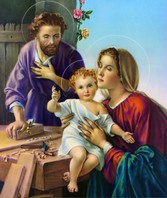 Christmas is on Friday. Wait, really?! Have we bought all of our presents? Are we ready for a Christmas feast? Is work ever going to end? These are the thoughts that plague us right now, but what we really should be asking is: are we ready for the birth of Christ? Advent is almost over - was there really enough time to prepare for the birth of the Son of God? The short is answer is 'no,' and the long answer is still 'no.’ But we know that as we prepare each liturgical year we take another step on the long journey toward Christ. Each celebration gives us the chance to refocus on that journey and draws us back into living out our faith wholly and fully. Who better to help us refocus our sight on Christ than the Holy Family? The Holy Family is the PERFECT example for us as we share in similar struggles. Through the Incarnation, Jesus became man and we believe him to be both fully human and fully divine. In a beautiful way his humanity is formed by Mary and Joseph. Who better to relate to then Mary and Joseph themselves? They were there when they thought Jesus was lost in the temple and there throughout his adolescence. Mary was there to inspire him to begin his ministry at Cana and was there as her son gave up his life for us. During Advent and Christmas we are watching Mary, Joseph, and Jesus grow and become a family. We should take this opportunity to allow ourselves to walk in their footsteps and live a life wholly committed to Christ. We should take this opportunity to ask for their intercession and assistance on our journey to God. Please do not think that their example only applies to families! Their example applies to each and every Catholic, Christian, non-Christian, and human being. The virtues that they live in the Bible are virtues that we should all be living. Look to how Mary and Joseph interact and form Jesus and open yourself up to them. No matter where we are in life we can learn from their unwavering commitment and their steadfast love. I challenge you to think about someone in your life who embodies these qualities: “unwavering commitment” and “steadfast love.” I only have to think back to last week at my father-in-law’s funeral. My wife was delivering the eulogy and said, “[he] reminded me of the importance of the ‘virtue of selfishness,’ as he so called it. This means that you can take control of how you feel, and you must take care of yourself so that you can take care of others. If you have nothing to give, what then are you authentically giving?” He got it. He understood that God is calling us to form ourselves in our faith, to root ourselves in him because we cannot lead others to God without first opening ourselves to his grace. How do we do this? We commit ourselves to Christ with steadfast love. This Advent, as we are preparing for the birth of Christ, let us remember to ground ourselves in his love so that as the new year comes we can go out and evangelize the world. Let us also remember Saint Pope John Paul II’s words on the Holy Family: “I wish to invoke the protection of the Holy Family of Nazareth…it is therefore the prototype and example for all Christian families…St. Joseph was a “just man”…may he always guard, protect and enlighten families. May the Virgin Mary, who is the Mother of the Church, also be the Mother of “the Church of the home”…May Christ the Lord, the Universal King, the King of Families, be present in every Christian home as He was at Cana, bestowing light, joy, serenity, and strength”. Nicholas Shields is a young professional working in Washington, DC.
This Saturday, December 12th, is the Feast of Our Lady of Guadalupe. Some know the story of how Our Lady appeared to St. Juan Diego and asked him to build a church in the spot she appeared. Juan Diego then went to the bishop and presented, as proof of the apparition, beautiful flowers that Our Lady had given him in the middle of the winter. When Juan Diego opened his tilma to show the bishop, the tilma had an incredible image of Our Lady on it - just as Juan Diego had described. Our Mother’s mission was to show compassion on her children so that those who interceded for help could receive peace in their hearts and find solace in their troubles.
When I was in high school, my family began praying the Rosary together with a portable shrine that circulated around our parish community of Our Lady of Guadalupe, called the “Pilgrim Queen” of the Family. We had a certain time each month to host and guard Mary - praying for our parish, the diocese and bishop, and all families. While she was under our care, we prayed the Rosary each day and when our time was up, another family had the honor of hosting Our Lady. Looking back, I think it was because of those years that we hosted Mary and prayed the Rosary together, my family experienced deep peace. Mary’s compassion was at full force in the Kirby house! In this Extraordinary Jubilee of Mercy, Pope Francis has called Catholics to show mercy to others with Works of Mercy and become an effective source of God’s love and compassion for each other by learning from Christ’s example. We can learn from Jesus and his Mother about how to live out mercy and compassion by clothing the naked and feeding the hungry, counseling the doubtful and forgiving offenses, to name a few. Within our own homes there can be difficulties and affliction that may seem unbearable at times. When that happens, I invite you and your family to pray the Rosary. When life is at stake or danger is imminent, pray the Rosary. If life is desolate and despair creeps in, pray the Rosary. At any time, in any place, with anyone - pray the Rosary. Mary is on our side. She is our Mother and loves us and wants us to be consoled. She will never abandon us. Blessed John Henry Newman was enamored by the beauty and meaning to Our Lady’s apparition at Guadalupe. He wrote the poem, “The Pilgrim Queen,” to help people and families better understand the meaning behind the portrait that he describes, which you can find below. “The Pilgrim Queen” by Blessed John Henry Newman There sat a Lady all on the ground, Rays of the morning circled her round, Save thee, and hail to thee, Gracious and Fair, In the chill twilight what wouldst thou there? 'Here I sit desolate,' sweetly said she, 'Though I'm a queen, and my name is Marie: Robbers have rifled my garden and store, Foes they have stolen my heir from my bower. 'They said they could keep Him far better than I, In a palace all His, planted deep and raised high. 'Twas a palace of ice, hard and cold as were they, And when summer came, it all melted away. 'Next would they barter Him, Him the Supreme, For the spice of the desert, and gold of the stream; And me they bid wander in weeds and alone, In this green merry land which once was my own.' I look'd on that Lady, and out from her eyes Came the deep glowing blue of Italy's skies; And she raised up her head and she smiled, as a Queen On the day of her crowning, so bland and serene. 'A moment,' she said, 'and the dead shall revive; The giants are failing, the Saints are alive; I am coming to rescue my home and my reign, And Peter and Philip are close in my train.” Our Lady of Guadalupe, Mother of God, Patroness of the Americas, pray for us! To learn more about the Rosary, please visit our Prayer and Catechesis resource page. “We declare, pronounce, and define that the doctrine which holds that the most Blessed Virgin Mary, in the first instance of her conception, by a singular grace and privilege granted by Almighty God, in view of the merits of Jesus Christ, the Savior of the human race, was preserved free from all stain of original sin, is a doctrine revealed by God and therefore to be believed firmly and constantly by all the faithful” (Pius IX. Ineffabilis Deus).
With these words, Pope Pius IX declared ex cathedra the doctrine of the Immaculate Conception; only twice in recent history has this occurred (the other being Pius XII’s declaration on the Assumption). For centuries, the faithful have commemorated the belief that Mary, from the moment of her conception, by a loving act of God, was free from sin. This, of course, does not mean that Mary was exempt in some way from Jesus’ redemption of humanity. Rather, as Blessed John Duns Scotus put it, she acquired the greatest of redemptions through her special role in Salvation History (Lectura III Sent., 119). Many who do not agree with the doctrine argue that if Mary was not born with Original Sin or did not sin at any point in her entire life (as Church teaching proclaims), then she could not have been fully human. Therefore, if the Blessed Mother had never been born into sin and never sinned in her life, how could she have been truly human? Some reason, how could she have experienced what humanity really goes through if she didn’t live with sin? Basically, how could she have been truly free to be a person, struggling with the temptations, the ups and the downs, the “messiness” that is life? The concept of a sinless life, to many, seems boring and totally reliant on some higher being. How can one be totally dependent on God’s love? In one of his earliest homilies as Pope, Benedict XVI answered these questions quite definitively. He stated, “The human being lives in the suspicion that God's love creates a dependence and that he must rid himself of this dependency if he is to be fully himself.” Indeed, many of us feel reluctant to fully give in to the love and mercy of God for fear that we would be giving up our ability to choose to be whomever we want to be. In that case, we rely not on God’s love, but on our own powers and abilities. This may sound preferable to some, but the Pope-Emeritus reminds us, “Love is not dependence but a gift that makes us live. The freedom of a human being is the freedom of a limited being, and therefore is itself limited.” Our knowledge and abilities as humans are but a speck in comparison to God’s love. Therefore, in choosing not to live in accordance with what is right and true, we actually limit ourselves from fully living. Mary, the Immaculate Conception, is the prime example of total abandonment to God’s love – she is truly free. Though she was sinless throughout her life, Mary still faced the temptation to sin. However, because she lived in complete openness to the Lord’s will, Mary did not choose sin, but rather, chose God. In his homily, Benedict notes, “The closer a person is to God, the closer he is to people…The fact that she is totally with God is the reason why she is so close to human beings.” Sinless, she was the pure vessel, the new Ark of the Covenant, through which “the Word was made flesh and dwelt among us” (John 1:14) She is the mother of God, and thus, the mother of Love itself, for God is Love. (cf 1 Jn 4:8) Living in that love, she calls out to us: “Have the courage to dare with God! Try it! Do not be afraid of him! Have the courage to risk with faith! Have the courage to risk with goodness!...so that your life will become broad and light, not boring but filled with infinite surprises, for God's infinite goodness is never depleted!” Today, on the Solemnity of the Immaculate Conception, Pope Francis has proclaimed the opening of the Extraordinary Jubilee of Mercy. Please visit our Year of Mercy resources by clicking here. Victor David is a collaborator with the Catholic Apostolate Center and a staff member at The Catholic University of America in Washington, DC. “I will wait; I will wait for you.” Call it my theme song. It’s a chorus I’ve been repeating to God for months now. Whenever I get impatient or frustrated, I begin to pray with these words from the Mumford and Sons song. It’s less of a prayer that implies God is not working in my life and more of a concession to not knowing exactly how. It’s a surrendering of control, a transfer of the ego away from the self—and trying to be alright with the process. The past 10 months have been a time of both joyful anticipation and relinquishing control. I am engaged and will be getting married in about one month’s time. For the majority of our relationship, my fiancé and I have been praying about where to live, discerning everywhere from Denver to San Antonio to Washington, D.C. We’ve been doing all of this in the midst of something most find insane: long-distance. It’s a journey we felt called into rather than one either of us would have chosen. There are times when I’ve felt like the Israelites wandering the desert sands. I’ve looked up at God and shouted, “where are we going!?” I’ve picked up the flakes of hoar frost on the ground, this food from heaven, and said to Him, “what is it?”—the literal translation of the Hebrew word manna. I haven’t always liked the manna the Lord has given me, nor can I claim to have responded with the confidence and joy that Our Blessed Mother had in her “fiat” to God at the Annunciation when she said, “Let it be done to me according to thy word.” (Lk 1:38). Most of the time, I have to fight the temptation to join the hungry and tired Israelites’ grumbling. I have to fight to say words that don’t come naturally to me as a human being: “I will wait,” “thank you,” and “fiat.” Jesus and Mary teach me the appropriate human posture in response to God’s plan: surrender and thanksgiving in the midst of the unknown or in times of suffering. The most beautiful example of this occurs right before Christ’s Passion. At the Last Supper, knowing fully of his impending torture and death, Christ gave thanks, blessed bread and broke it (cf Mt. 26:27). Moments later, at the height of his spiritual and emotional passion in the Garden of Gethsemane, Christ uttered words akin to those of his mother about thirty-three years earlier, “not my will, but yours be done” (Lk. 22:42). Meditating upon Jesus and Mary’s examples throughout my engagement and long-distance relationship has enabled me to say many, many times, “I will wait,” “fiat,” and “thank you”—sometimes feebly, sometimes resolutely. I have come to learn that these words are the foundation of the Christian life. They are the manna which helps move us forward in our desert wanderings. They enable the waiting period, the time of desolation, to be not only bearable, but fruitful, joyful. They are the wellsprings of life, the oases in the desert that refresh our souls. Living eucharistically and receptively has given me the strength to say, “Yes, Lord. I will wait; I will wait for you and your plan for my life. I will wait joyfully, with hopeful anticipation as your plan unfolds—knowing that through suffering you lead me to resurrection. And I will live attempting always with your help to give thanks in the midst of the waiting, just as Christ gave thanks before his Passion. I will say ‘your will be done’ with Mary. I will wait for you to turn the desert before me into the Promised Land. I will wait; I will wait for you.”
“Don’t forget to call your mother!”I’m often prompted by my family, especially my mom, whenever I call home. In remembering to take the time and effort to do so, I strengthen our relationship through this simple sign of love and reaffirm my devotion to her and the rest of the family. No matter how my life is going at any particular time, it is an immense comfort and relief to be able to call upon her and share with her my struggles and shortcomings that I’m otherwise tempted to keep suppressed within myself. While not everyone is blessed to have such a grounding in their family life, they can always turn to their Heavenly Mother with petitions and struggles, in times of strength or trial. One of the most widely recognized ways of doing this is through the recitation of the most Holy Rosary, traditionally believed to have been devised by St. Dominic after experiencing a vision of the Blessed Virgin Mary. An optional devotion, the Rosary has nonetheless been instrumental for countless Catholics in the formation of their prayer lives and spirituality as a whole. It is wonderfully beautiful, not only as expressed in the many styles a Rosary is made in, but in the simple order of its composite prayers and the non-necessity of having to recite it in a specified space or time. Each decade of the Rosary invites us to reflect on and participate in a mystery in the ever-joined lives of Christ and His Mother--in the words of St. John Paul II, “it has all the depth of the Gospel message in its entirety.” In a culture where having structure and taking one’s time are abnormal, the Rosary makes no sense. I’ve heard it said once that instead of moving us quickly from one end to another end without pause, the Rosary, by contrast, forces us to take our time in our contemplation before ultimately ending up where we started (at the beginning of the circle)! The repetition of each “Hail Mary”is a unique expression of love for our Mother. As Bishop Sheen noted in “The World’s First Love”: The beautiful truth is that there is no repetition in, “I love you.”Because there is a new moment of time, another point in space, the words do not mean the same as they did at another time or space. Love is never monotonous in the uniformity of its expression. The mind is infinitely variable in its language, but the heart is not. The heart of a man, in the face of the woman he loves, is too poor to translate the infinity of his affection into a different word. So the heart takes one expression, “I love you,”and in saying it over and over again, it never repeats. It is the only real news in the universe. That is what we do when we say the Rosary, we are saying to God, the Trinity, to the Incarnate Saviour, to the Blessed Mother: “I love you, I love you, I love you.”Each time it means something different because, at each decade, our mind is moving to a new demonstration of the Saviour’s love. Like many others, when I first began praying the Rosary, I was disheartened by its length and repetition and so did not fully grasp all of the spiritual benefits it offered. As I sought to deepen my prayer life, however, I gradually dedicated myself more fully into its recitation, and only then did I start to understand the weight of each word I uttered. In honoring Mary, we honor Christ; through Mary we receive God’s graces and our intercessions pass. Especially during October, the month of the Rosary, let us maintain this great weapon of the Faith in our spiritual battles, keeping it at our side--in our pockets--and praying it with devotion, patience, and humility always. Did you know that as Catholics we commemorate the month of October as the month of the rosary? The rosary calls us to reflect on the life of Christ through the intercession of Mary, our Blessed Mother. The rosary is an invitation for us to build a relationship with Mary, so that we can better know her son. St. Thomas Aquinas once said, “As mariners are guided into port by the shining of a star, so Christians are guided to heaven by Mary.” One way to get to know Mary is by reading about her life from scripture. Mary’s words are not recorded often, and her actions seem to skim by even more subtly. Even so, the presence of her words and actions are profound, calling us to a deeper relationship with her and her son.
First, we learn from Mary that it is okay to ask questions on our faith journey. When the angel Gabriel announces to her that she will be the mother of the Son of God, she simply asks, “How can this be, since I have no relations with a man?” (Luke 1:34). To know ourselves and have confidence in what we believe, we should always be asking questions. As a teacher, I encourage my students to ask questions all of the time. Although I am not as good as I want to be myself, from Mary I can take courage to ask more questions so that I can learn and grow in hopeful faith. When Mary questioned the angel, she learned: “Nothing will be impossible for God” (Luke 1:37). And from there, we are called to take Mary’s example of humility and trust in her “Fiat” when she says, “Behold, I am the handmaid of the Lord. May it be done to me according to your word” (Luke 1:38). The second lesson that I have learned from Mary in the Bible has had the most profound impact on my life. After the birth of her son, and in the presence of the shepherds and angels, Luke records that “Mary kept all these things, pondering them in her heart” (Luke 2:19). For me, this calls me to a life of deep reflection and intimacy with God. What I keep in my heart can move me closer to God if I invite him to share it with me: the goodness of each day, the little and big miracles, and even the hard and difficult trials. With God, everything is divine and happens with purpose; it is how I react, reflect, and let him mold me with the contents of my heart that I can become most pure. Mary is the perfect model of this. She remembers God’s glory, and holds it fast to her heart. Her life is characterized by this. I want to revel in God’s glory in all things like Mary, so that I can share this joy and love with others, and trust in his goodness when trials arise. Finally, Mary’s last words in the Bible occur at the Wedding of Cana when the reception has run out of wine. She tells her son of his time to perform his first miracle, "They have no wine" (John 2:3), and it seems as though Jesus is not convinced. But next, Mary tells the servers, “Do whatever he tells you” (John 2:5) with the utmost simplicity and confidence. Not only does she know that he is capable of great things, but she knows that her son will do great things. And so we must “do,” too. This message – “do whatever he tells you” – is a call for all of us to follow the words of Christ. Mary can only lead us to her son if we submit to his will with the trust and confidence she has modeled for us. Like Mary, we too must live our life as a Fiat, “Lord, let it be done to me according to your word.” What beautiful gifts Mary gives to us to know her faith and to let her mold us to be more like her son. Do not be afraid to let Mary be the one to lead you to Christ. She is perfect, in that she knows how to live her life for God: “Mary’s greatness consists in the fact that she wants to magnify God, not herself” (Deus Caritas Est, 41). Let her help you magnify the Lord. Today I will be praying the “Magnificat,” which is found in Luke. It is Mary’s prayer of joy and thanksgiving to God. Please join me in asking for Mary’s guidance towards her son, to lead us to a life full of grace as hers. Mary’s Magnificat “My soul proclaims the greatness of the Lord, my spirit rejoices in God my Savior for he has looked with favor on his lowly servant. From this day all generations will call me blessed: the Almighty has done great things for me, and holy is his Name. He has mercy on those who fear him in every generation. He has shown the strength of his arm, he has scattered the proud in their conceit. He has cast down the mighty from their thrones, and has lifted up the lowly. He has filled the hungry with good things, and the rich he has sent away empty. He has come to the help of his servant Israel for he remembered his promise of mercy, the promise he made to our fathers, to Abraham and his children forever.” Luke 1:46-55 Alyce Shields is a teacher in Washington, D.C. What do you do when you are feeling sad, scared, or anxious? Where do you turn for a source of comfort?
The Blessed Mother knows all about sorrow. She is always ready to comfort any one of her children who come to her in prayer. But, have you ever thought about offering comfort to her? The Feast of Our Lady of Sorrows is today, September 15, 2015. Perhaps you might be able to find a little bit of time to spend with her. Much less familiar than the Rosary is the Chaplet of the Seven Sorrows. The chaplet is made up of seven groups of seven beads. Each group is separated by a single bead. In praying the chaplet, you would meditate on each of the seven sorrows while reciting one Our Father and seven Hail Mary’s. If you would like to pray the chaplet, this webpage can be of help. The Seven Sorrows of the Blessed Virgin Mary: The Prophecy of Simeon The Flight into Egypt The Child Jesus Lost in the Temple Mary Meets Jesus Carrying His Cross Mary at the Foot of the Cross Mary Receives the Body of Jesus Mary Witnesses the Burial of Jesus The seven sorrows span from the earliest days of Jesus’ life to His final hours. All of the Blessed Mother’s sorrows tie back to her Son. For a mother, very few things compare to watching the child she loves hurting. Although the Blessed Mother certainly put her entire trust in God, she still would have known terror when the Holy Family fled to Egypt to escape the threat of King Herod to save their precious newborn Son. Not only was the Holy Family far from home, but they had no idea when it might be safe to return to Nazareth. Any parent can tell you how scary it is when their child is lost. No words would be adequate to describe how scared Mary must have felt as she and Saint Joseph spent three full days searching for Jesus before finding Him teaching the elders in the temple. The next time you ask the Blessed Mother for her intercession before God, remember that she understands sorrow and anxiety. During her own life, the Blessed Mother understood suffering; just like all of us today understand the experience of suffering in our own lives. She is always there, more than happy to pray for us. Perhaps you might return the favor, and find a bit of time to spend with her. Our Lady of Sorrows, pray for us! Jennifer Beckmann is an Administrative Secretary for the United States Conference of Catholic Bishops. 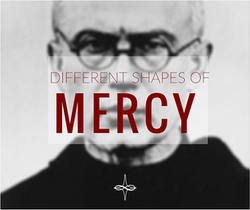 Pope John Paul II, in his homily at the Mass he celebrated at the site of the Brzezinka (Auschwitz II) Concentration Camp in 1979; called St. Maximilian Kolbe “the patron of our difficult century.” Although the dawn of a new century has since come, St. Maximilian remains a strong symbol of Christian charity today. Seventy-four years ago tomorrow, he offered up an ultimate act of charity while knowing it would cost him his own life to save another. While Maximilian Kolbe was a prisoner at Auschwitz, several men escaped from the camp. In an attempt to deter other prisoners from trying to escape, the officers chose ten men to starve to death. When one of the men chosen expressed his anguish because he had a wife and children, St. Maximilian willingly volunteered to take his place. After two weeks without food or water, St. Maximilian was the only one of the ten still alive. At that point, he was killed by a lethal injection. Although we cannot know for certain what happened while the ten men were held in the bunker, there are reports that St. Maximilian spent much of the two weeks leading the other nine in prayer to the Blessed Mother. Most of us will not be called to make the same sacrifice as St. Maximilian did for a stranger, but God calls each of us to works of charity and mercy. The Corporal and Spiritual Works of Mercy are simple ways to love God and to love our neighbor. This might mean sacrificing your Saturday afternoon to drive an elderly neighbor to her doctor’s appointment or to volunteer at a food pantry. Mercy might take the form of comforting a coworker or classmate (regardless of whether or not you are friends) when you notice them grieving. Mercy means not honking or cursing, but instead offering up a prayer when someone cuts you off in traffic. Mercy could mean not buying another sweater when you already have ten hanging in your closet and instead donating the money to a charity for the homeless. Every act of mercy requires some sacrifice--whether you are giving up time, money, or a bit of yourself--but there is no simpler way to tell God that you love Him. St. Maximilian Kolbe, pray for us! Jennifer Beckmann is an Administrative Secretary for the United States Conference of Catholic Bishops.
During the month of May, we especially honor Mary and her devotion to our Lord. While prayer beads have been used throughout the centuries by various religions, some believe the Blessed Virgin Mary gave us the prayer of the rosary back in the 13th century when she appeared to St. Dominic. The rosary assists us in growing a deeper appreciation for the mysteries of our Lord’s life and the witness of our Blessed Mother Mary. The mysteries help us to unite our life more closely to our Lord’s. Today, I’m sharing the story of a parishioner at my church who has a particular connection to Mary and the rosary.
Sharon Zahner began making sterling silver rosaries as a 12-year-old in a rural town that had a small Catholic community. She saw her grandmother making rosaries and wanted to learn how to make them too. Throughout grade school and high school, Zahner continued making rosaries and delivering them to the First Communicants in her town each year. After high school, Zahner focused on her college studies and did not make rosaries as often. When she moved to Jacksonville, FL with her husband, she saw in the church bulletin where a nun needed folks to help her make rosaries for missions overseas. Zahner signed up to help. She encouraged her mother to help her out as well. Her mother gathered a group of 5-6 women in her retirement community, and they made hundreds of rosaries each week for the missions. Zahner became inspired by her mother’s success and started making rosaries when she moved to her new Tallahassee parish, Good Shepherd Catholic Church. At first she started making them for children and teens going through their First Communion and Confirmation. Then she made rosaries for the hospitals, then Good Shepherd’s prison ministry, and then church retreat attendees. In addition, she now makes them for children at two other low-income parishes in the Tallahassee community. Whenever visiting priests or seminarians come to Tallahassee, Zahner supplies them with her hand-made rosaries. A visiting priest to our parish comes every summer from Africa. At first, Zahner provided him with about 60 rosaries. Father Remy asked for more on his next visit, and now it’s a tradition. Even a mission in Belize received about 150 rosaries from Zahner when they reached out to parishes around the world with the same parish name asking for rosary donations. “If you make a rosary,” Zahner said, “you just feel good. You’re helping somebody connect with the Catholic religion. I like to know that I’m connecting someone with Jesus through the Blessed Virgin.” Fifty years later, Zahner continues to make rosaries for the Tallahassee and larger worldwide communities. When I asked her how many rosaries she makes a year, she said it had to be a couple thousand. She made 500 rosaries in January alone, just so she could have enough if someone needed them to share with others. When she travels to military bases or other Catholic parishes, she brings rosaries with her. Her youngest son gave out more than 150 rosaries to Covecrest summer camp attendees each year while in high school. She even made an orange and blue University of Florida rosary for me when I was accepted to college! Zahner teaches our parish children how to make rosaries as well. Recently, she helped out at a religious education class, teaching the students how to make rosaries to give to their mothers for Mother’s Day. “Whenever I have a spare moment, I just pull out my rosary making materials and start making rosaries,” Zahner said. “People will come over to me and ask what I’m doing, and I tell them, ‘I’m making a rosary. Would you like one?’ And you know, the funny thing is, no one declines.” It takes Zahner 15-20 minutes to make one rosary. In that time, she makes conversation with the inquiring individuals who share their stories and faith with her. Some people have admitted they don’t remember how to pray the rosary, and so she keeps rosary cards with her at all times. “I have a tangible reminder that this symbol of our religion is going to someone and being put to good use,” she said. “I believe actions speak louder than words. This is my way of sharing my faith with others.” Stories of everyday saints, like this one of Sharon Zahner, help inspire us in our daily activities and prayer life, bringing us closer to God. Zahner’s rosary making reminds us that sharing our faith can be fun and simple while still making an impact on the community. I’ll close with the bible verse she includes on a sheet of paper with the rosaries she gives to First Communicants and Confirmandi: “Do not be anxious about anything, but in every situation, by prayer and petition, with thanksgiving, present your requests to God. And the peace of God, which transcends all understanding, will guard your hearts and your minds in Christ Jesus (Philippians 4:6-7). Dana Edwards is a recent graduate of the University of Florida. She currently resides in Tallahassee, Florida where she works as a Digital Strategist, and volunteers as a lector and with communication outreach at her local parish, Good Shepherd Catholic Church. “For God so loved the world that he gave his only Son, so that everyone who believes in him might not perish but might have eternal life. For God did not send his Son into the world to condemn the world, but that the world might be saved through him.” (John 3:16-17)
Most parents feel incredibly protective of their children and hate to see them hurting. Chances are, if you ask your mom or dad, they would say that watching you break an arm, fall off your bike, or be picked on by a bully was painful for them. Maybe you are a parent who has experienced how hard it can be to see your child in pain. God, who is infinitely perfect, loved us so much that He was willing to sacrifice His only Son so that we would have a chance at Heaven. God knew that some would chose to reject His love. He knew exactly how painful it would be, for both Himself and the Blessed Mother, to watch His Son suffering on the cross. On Good Friday, we commemorate the ultimate sacrifice. The Stations of the Cross allow us to journey with Christ the last hours of his life on earth. Even if you are unable to physically move from station to station, it is a wonderful opportunity to mediate on all that Jesus was willing to undergo for our sake. The First Station: Jesus is condemned to death. The Second Station: Jesus carries His cross. The Third Station: Jesus falls the first time. The Fourth Station: Jesus meets His mother. The Fifth Station: Simon of Cyrene helps Jesus to carry His cross. The Sixth Station: Veronica wipes the face of Jesus. The Seventh Station: Jesus falls the second time. The Eighth Station: Jesus meets the women of Jerusalem. The Ninth Station: Jesus falls the third time. The Tenth Station: Jesus is stripped of His clothes. The Eleventh Station: Jesus is nailed to the cross. The Twelfth Station: Jesus dies on the cross. The Thirteenth Station: Jesus is taken down from the cross. The Fourteenth Station: Jesus is laid in the tomb. Imagine how the Virgin Mary must have felt when she met her Son on the way to Golgotha. Her heart must have been breaking watching Him struggle to carry the cross. Her tears must have hurt Jesus’ own heart. After Jesus fell for the third time, He got back up and continued on. He didn’t grumble or complain. It would have been easy to decide that it was too hard and to just stop. When we carry our own cross, however small that burden, it is incredibly easy to complain to God and to say that we cannot do it. We might not be able to on our own, but with God’s help, all things are possible. In His last moments on the cross before He died, Jesus was thinking of us. “Father, forgive them, they know not what they do.” (Luke 23:34) God stands ready to give us His unconditional love and forgiveness. He has already done the hard part. Through His suffering and death, He threw open the gates to Heaven. He is ready to give us the graces to get there. All we need to do is ask Him for it. Jennifer Beckmann is a Staff Assistant for the United States Conference of Catholic Bishops. The Annunciation of the Blessed Virgin Mary, which we celebrate tomorrow, is one of my favorite feast days in the Church. Over the years, it has become my favorite solemnity because of two short lines from the Gospel,
Fear not, for nothing will be impossible with God. And then the next line, Behold: I am the handmaid of the Lord, let it be done to me according to Thy Word. (Luke 1: 37-38). These two lines have helped me through the hardest years of my life. In high school, throughout college, and as I am beginning my career, I use these two verses to guide each tough decision I make. To me, the first line is about faith in God no matter what, and the second is about saying “Yes!” and trusting that God’s plan will guide me. Fear not, for nothing will be impossible with God. When we are afraid, our whole presence is affected. We worry about things like the future, bills, jobs, and focus less on the beauty of what is right in front of us. Our minds become full of details that we often have no control over, and our lives can lose sight of our purpose in it all. When we allow Jesus to “take the wheel,” our paths are clearer and calmer, and we can return to living in the present. If something is meant to be, God will see it through for us, no matter what. If something is not meant to be, we have to trust that God has already figured out a better option. With God, we know that anything is possible. Behold: I am the handmaid of the Lord, let it be done to me according to Thy Word. Mary responded to the angel Gabriel with “fiat” or “let it be done,” not knowing what was going to happen, yet saying yes anyway. As a role model for all women and a perfect example of holiness, Mary trusted in God’s Word and showed the world that faith can change the course of history. If we say our “Yes!” to God, whether for a big life change, in a short prayer for a faithful day, or to devote our time to actively serving others, He will provide for us. When we become a willing instrument of His Grace, we die to our selfishness and worry, to become a better apostle of Christ in our communities. We are chosen by God, like Mary was, to live lives in faith. It is a difficult request, to remain unwaveringly trusting for a plan to which we do not see or know. This poem, popularized by Corrie Ten Boom, a Dutch Christian writer who helped Jews during the Holocaust, perfectly sums up my message: My Life is but a weaving between my Lord and me; I cannot choose the colors He worketh steadily. Oft times He weaveth sorrow And I, in foolish pride, Forget He sees the upper, And I the under side. Not til the loom is silent And the shuttles cease to fly, Shall God unroll the canvas And explain the reason why. The dark threads are as needful In the Weaver’s skillful hand, As the threads of gold and silver In the pattern He has planned. He knows, He loves, He cares, Nothing this truth can dim. He gives His very best to those Who leave the choice with Him. Krissy Kirby is a teacher in the Archdiocese of Washington, D.C. “God is offering us grace, let us be man enough to accept it!”
- Monsignor Vito Buonanno I heard this a couple weeks ago at a Knights of Columbus meeting and it has stuck with me ever since. Not only are these words empowering and driving us to seek God, but they also perfectly describe our Lenten journey. We are imperfect, we are lacking, we are human, but God still loves us. He is offering us the grace to seek Him, to journey toward him, to be with Him, let us accept this grace, take His hand, and walk with God! This is easier said than done. Last week we celebrated Ash Wednesday and many of us made Lenten promises to abstain from sweets, help out a neighbor, or pray a little bit more. And at the beginning of the Lenten season, many of us are most likely already struggling with our Lenten promise. But we cannot focus on those failures, rather we must focus on how to stand back up and continue walking toward Christ. We need to focus on converting ourselves to Christ. In his Ash Wednesday homily in 2014, Pope Francis said, “Once again Lent comes to make its prophetic appeal, to remind us that it is possible to create something new within ourselves and around us, simply because God is faithful, always faithful, for he cannot deny himself, he continues to be rich in goodness and mercy, and he is always ready to forgive and start afresh.” We have heard similar themes before in Baptism. In Baptism, we talk about beginning anew and starting afresh as we enter into the water, die with Christ, and are reborn in him. Our Lenten journey is a reminder of our Baptismal call to live out the Gospel and in doing so we convert others and ourselves to Christ. The Lenten journey is different for each and every one of us for we all convert ourselves to Christ in different ways. And yet at the center of every conversion has to be prayer. It is only through prayer that we can come to understand all that God is asking of us. It is only through a dialogue with Him that we can form ourselves in His image. It is only through prayer that we are able to examine ourselves, reconcile with Christ, and move forward walking with hope toward the light of salvation. Prayer is not always easy. Oftentimes I sit down to pray and am bombarded with thoughts about everything that I need to do that day, the things in my life that are worrying me, and the distracting sounds around me. Some people would say to find God in those distractions, to let Him speak to you through them, but that does not always work for me. When I am struggling to pray I turn to formed prayer, to writings of Archbishop Fulton Sheen, Pope Francis, or St. Thomas Aquinas. When I am struggling to pray I turn to Our Blessed Mother and pray the rosary. These things ground me in my faith and when I am finished I am ready to listen. This Lenten season lets us open our hearts to Christ so that He may guide us on this journey to Him. Jesus wants to love us, we just have to say yes! Nicholas Shields is a Young Professional in Washington, D.C. To learn more about Lenten prayer please check out our Lenten Resources! Today we celebrate the Solemnity of the Blessed Virgin Mary, Mother of God. As I thought about the many lessons we can learn from our Blessed Mother, I found myself particularly drawn to wondering what it means to be a woman of faith. I’m sure there are many others who have pondered this same idea. Sometimes, I think about how the 21st century seems to illuminate women through a lens of conformity, threatening our truest femininity with negative connotation and making it seem “okay” to expect less of ourselves and of others. Many young women are faced with the struggles of understanding themselves according to how others perceive them, never knowing how to love themselves for who they really are.
Women are faced with the struggles of figuring out what it means to be a woman. We are told in different ways all around us that we are not smart enough or too intimidating, that we are not thin enough or too fat, to flaunt ourselves is to respect ourselves, in order to “get a man” we need to do x, y, and z. I offer a different perspective: womanhood is beautiful and blessed thing that proves we are the crown of creation by God the Father. My role as a Catholic woman is to support and love those around me with unfailing resilience and without ceasing. In the Catholic Church, there is one woman who rose above all difficulties and strife because she said, “Yes.” Mary the Mother of God is a perfect model of holiness and willful obedience to God, and a shining example to womanhood. When betrothed to a man she loved, she faced persecution and rejection from those around her. She knew others would judge her and they would criticize her, but she held true to her “Yes” and bore the Son of God. In our lives, what do we do when others look at us with disgust or with judgments? Can we not choose the higher road and be the person God wants us to be, regardless of what others may think of us? Mary certainly did. It is hard to swim opposite the current at times. Standing up for our virtue is something that most women find difficult or have never heard of before. As a woman of faith, I know that my responsibility to God and to myself is to love Him and love myself. God knows my most intimate thoughts and feelings and he will never leave me. When I’m feeling alone, disappointed, discouraged, scared, or disrespected there will always be one who will stand by me until the end, and that one is Jesus. What does it mean to be a woman of faith? It means to love above all else, understand that you are a precious creation, and that you are loved dearly by God himself. Krissy Kirby is a teacher for the Archdiocese of Washington. Mary has appeared throughout the last two thousand years to different peoples all around the world. Tomorrow is the Feast of Our Lady of Guadalupe on which we celebrate the Virgin Mary’s appearance to Juan Diego on the Hill of Tepeyac outside of Mexico City. We have all heard the story of how Mary appeared to Juan Diego and told him to build a church on the hill in her honor. Upon returning to his town and informing the Archbishop of what he had seen, the Archbishop instructed him to return to Tepeyac and ask for a sign that this was indeed the Virgin Mary. Mary instructed Juan Diego to fill his tilma with roses and carry them back to the Archbishop. When Juan Diego laid the roses before the Archbishop there on his tilma was an image of the Virgin Mary, the image that we know today as Our Lady of Guadalupe. The Basilica built on the very spot of her appearance is the most visited Catholic site in the world. This alone speaks to the widespread devotion to Our Lady of Guadalupe throughout the world. Today’s feast day provides us with a wonderful opportunity to remember the universality of Mary. She has appeared to many different cultures at many different times throughout history and with each depiction she reminds us that she stands beside each and every one of us as a mother for all people.
Pope Francis, in an audience shortly before the Feast of our Lady of Guadalupe in 2013, spoke of one of the most important aspects of Mary: “When the image of the Virgin appeared on the tilma of Juan Diego, it was the prophecy of an embrace: Mary’s embrace of all the peoples of the vast expanses of America – the peoples who already lived there, and those who were yet to come. Mary’s embrace showed what America – North and South – is called to be: a land where different peoples come together; a land prepared to accept human life at every stage, from the mother’s womb to old age; a land which welcomes immigrants, and the poor and the marginalized, in every age. A land of generosity.” This points right to the heart of Mary as our Mother, a Mother for all peoples, for all cultures. The Virgin Mary is an important aspect of my own faith, but for one reason or another, her depiction as Our Lady of Guadalupe holds a special place in my heart. It might be because her feast day is also my birthday, or because my Dad often jokes that he wanted to name me Guadalupe, or that I grew up in Texas where this depiction is very prominent. I do not know why her image speaks to me so deeply, but I do know that in my devotion to Our Lady of Guadalupe I feel a Mother’s embrace. I know that she welcomes me in and I feel at home. But we are not meant to just live for that embrace of Mary, our Mother, but rather we are called to embrace all peoples and all cultures. And Mary teaches us how! She is the perfect example of how to live out that embrace. She unites us in our humanity and she strengthens our faith in Jesus. She knelt before the cross watching her own son die, and yet when Christ entrusted all of humanity to her, she said yes. She opened her arms and welcomed us in. On this Feast of Our Lady of Guadalupe, let us be like her, let us open ourselves to the whole Church, not just in our local communities but throughout the world. Nicholas Shields is a young professional in Washington, D.C. |
Details
Archives
July 2024
Categories
All
|
About |
Media |
© COPYRIGHT 2024 | ALL RIGHTS RESERVED

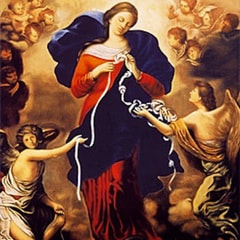
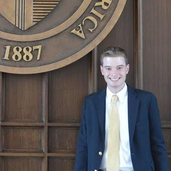
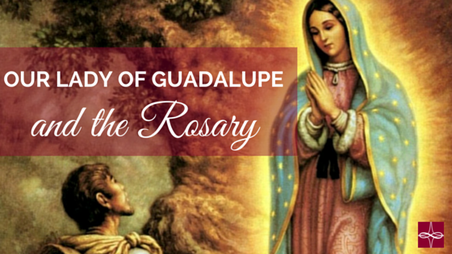

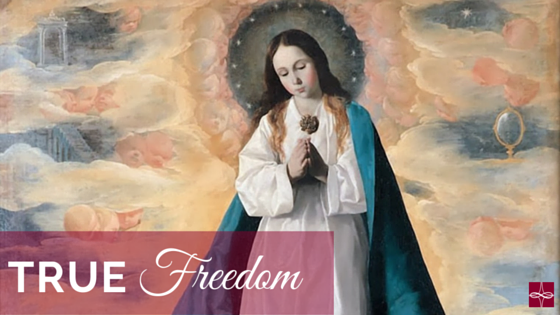
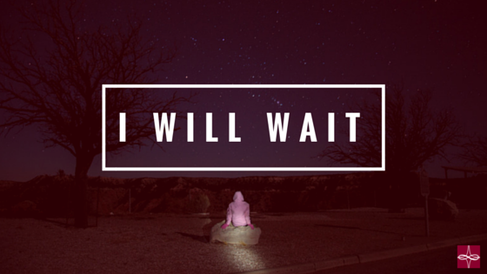

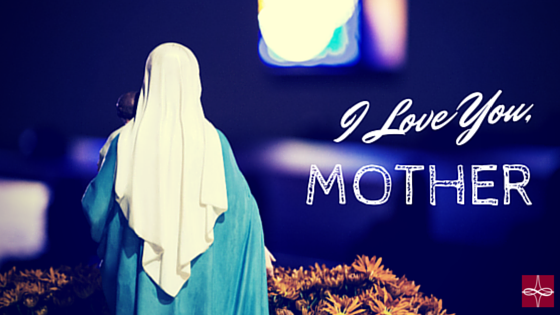

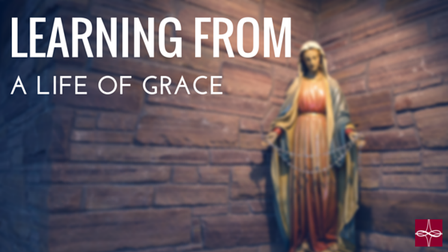
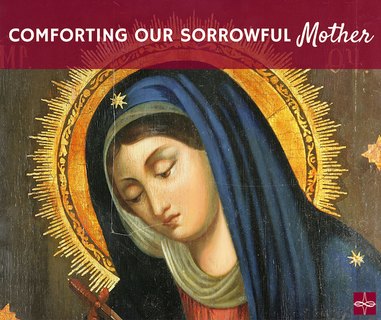
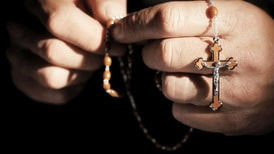
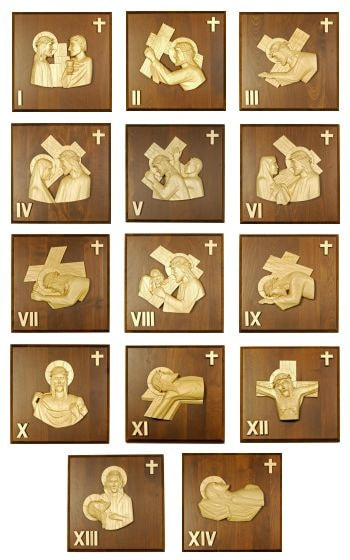

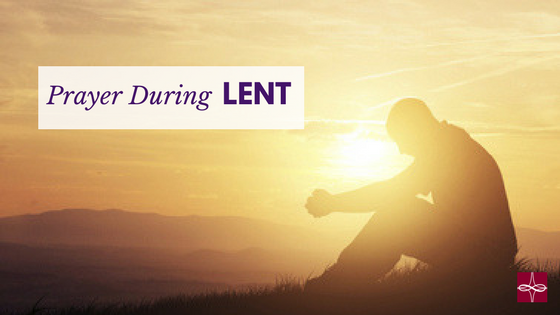
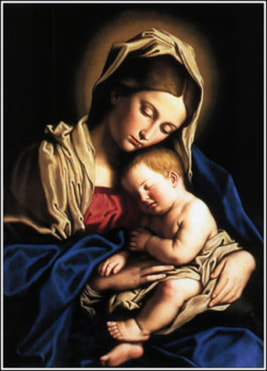
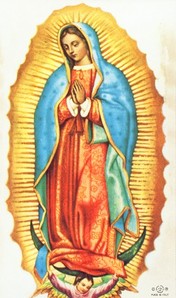
 RSS Feed
RSS Feed